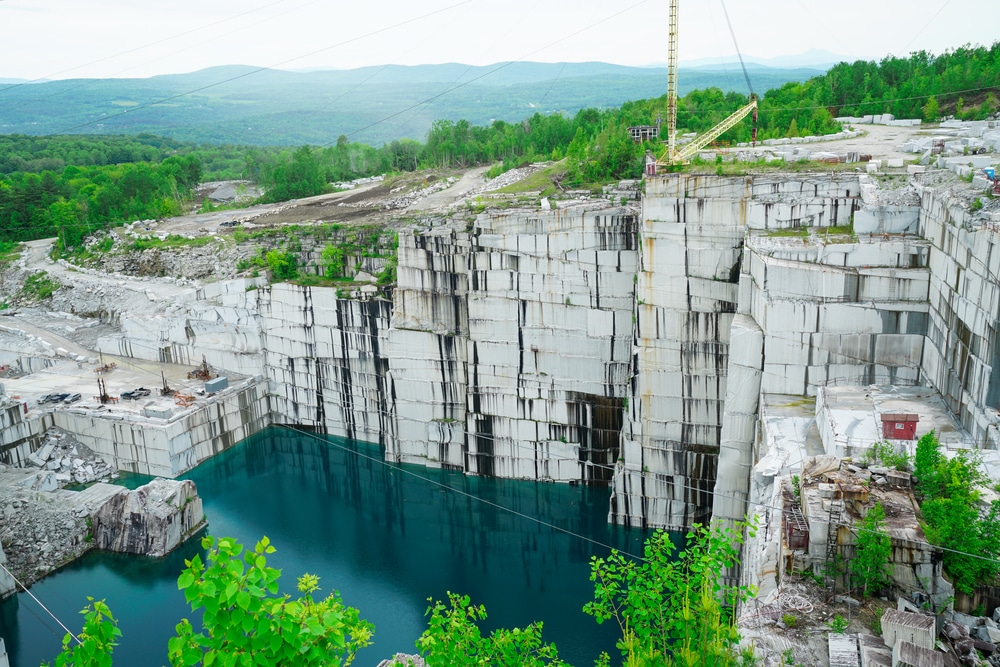Unearthing the Rich Background and Sustainable Practices of Granite Quarrying
As we depend on the precipice of uncovering the detailed tapestry of granite quarrying, a journey through time exposes not simply the physical act of drawing out rock but likewise the social and historical relevance woven right into the very material of this technique. From the ancient origins that laid the structure for modern-day quarrying methods to the lasting practices that are shaping the future of this sector, each carve mark on granite surfaces narrates waiting to be uncovered (granite quarries in south africa). The legacy of granite quarrying stretches much past plain extraction; it is a testament to human ingenuity, durability, and the long-lasting attraction of this stunning rock
Old Beginnings of Granite Quarrying
Going back to old civilizations, the method of quarrying granite has been an indispensable component of human background and building advancement. The earliest evidence of granite quarrying go back to ancient Egypt, where enormous pyramids and complex sculptures were crafted from this sturdy rock. The Egyptians utilized primitive devices to remove granite blocks from quarries, showcasing the importance of this material in their monumental constructions.
Moving on in history, the Greeks also made considerable contributions to the quarrying of granite. The Greeks used granite in various building wonders, such as holy places and statuaries, showing their skill in shaping and carving this hardy stone. The Romans further refined the strategies of quarrying granite, using advanced devices like knives and hammers to remove and form granite for their renowned structures.
Through the centuries, the practice of quarrying granite has actually progressed, with contemporary innovations boosting effectiveness while preserving the ageless charm of this natural rock - granite quarries in south africa. From old worlds to contemporary builders, the heritage of granite quarrying remains to shape our world
Advancement of Quarrying Methods
The development of quarrying techniques has actually been marked by a continuous development towards greater performance and precision in extracting granite. From the primary approaches employed by our forefathers to the advanced technologies made use of in contemporary quarrying procedures, the market has actually gone through significant innovations. Early quarrying methods involved hands-on labor with basic devices such as chisels, hammers, and wedges to draw out granite blocks from the earth. As people progressed, strategies like fire-setting and primitive explosives were presented to facilitate the removal process.
In more current times, the advent of machinery changed the quarrying industry, allowing much faster extraction rates and boosted productivity. Technologies such as diamond cable saws, high-pressure water jets, and pneumatically-driven drills have actually become common in modern quarries, allowing for exact cutting and lowered waste. Furthermore, developments in computer-controlled tools and 3D modeling have actually optimized quarrying operations, leading to very little ecological influence and boosted sustainability methods. As the need for granite remains to increase, the advancement of quarrying strategies continues to be indispensable to meeting industry needs efficiently and sustainably.
Cultural Significance of Granite
Granite holds a click to read more profound social importance throughout different civilizations due to its long-lasting presence in building masterpieces and respected monuments. The social significance of granite expands beyond its physical features; it symbolizes strength, stability, and eternity, making it a sign of sustaining traditions and practices.

Sustainable Practices in Quarrying
Among the rich history of granite quarrying and its social importance lies an expanding emphasis on lasting techniques within the market. As environmental recognition and problems regarding resource deficiency have heightened around the world, the quarrying field has actually progressively embraced lasting approaches to decrease its influence on the atmosphere and bordering neighborhoods.

Furthermore, reclamation and rehabilitation of quarry websites post-extraction are indispensable to lasting techniques. By recovering quarried locations to a natural or useful state, such as producing wildlife habitats or recreational rooms, quarriers can counter the ecological footprint of their operations and add favorably to the regional community.
Legacy of Granite Quarrying
With a historical background soaked in craftsmanship and industrial progress, what enduring influence has granite quarrying left on the landscape of contemporary society? The legacy of granite quarrying goes beyond simple extraction practices; it has actually shaped architectural wonders, metropolitan landscapes, and cultural heritage worldwide. The sturdy nature of granite has made it a preferred selection for monuments, buildings, and framework, standing as a testament to the skill and virtuosity of quarry workers throughout generations.
In addition, the economic impact of granite quarrying can not be ignored. The industry remains to supply employment possibilities and drive local economic situations in areas where granite extraction is common. It has additionally spurred technical developments in quarrying strategies and devices, leading to a lot more efficient and lasting practices.
In regards to sustainability, the heritage of granite quarrying includes efforts to alleviate ecological impacts with recovery tasks and responsible resource administration. By stabilizing financial interests with environmental stewardship, the market makes every effort to guarantee that future generations can continue to profit from this enduring natural resource.
Final Thought

Comments on “The Hidden Treasures: Discovering Granite Quarries in South Africa”